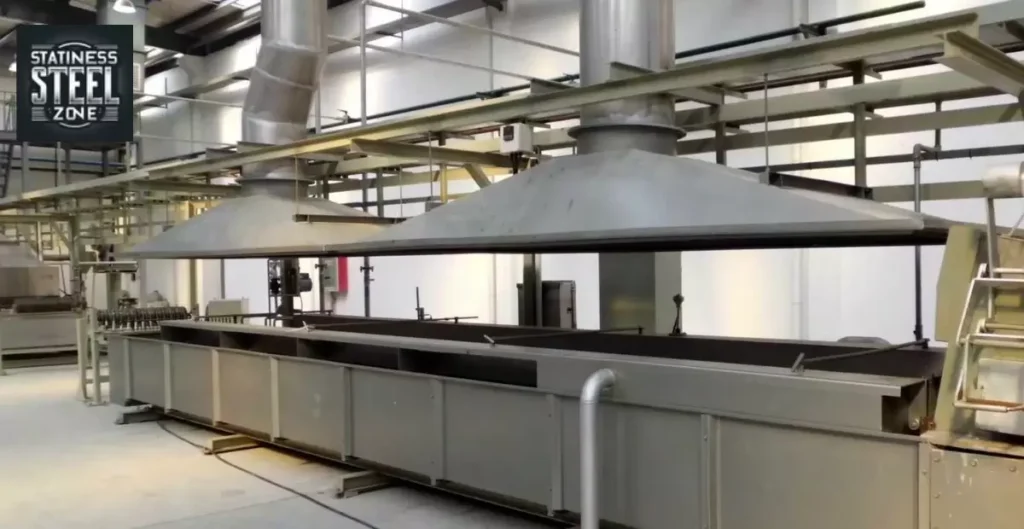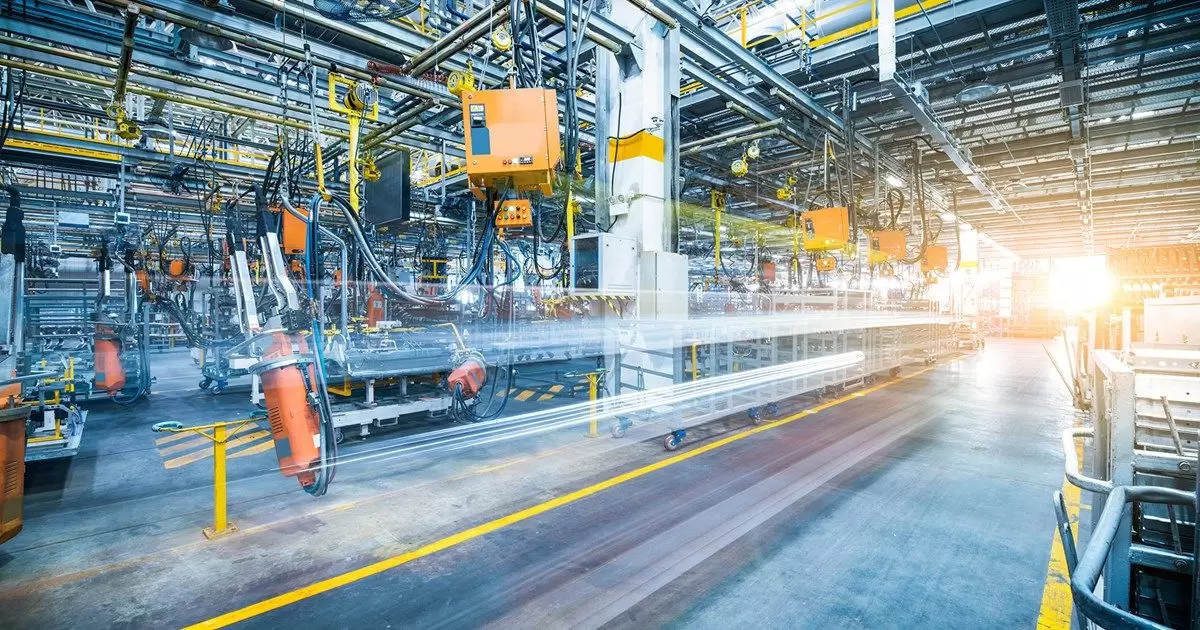Pickling and passivation are crucial processes in the maintenance and enhancement of stainless steel surfaces. On the other hand, passivation is a post-pickling process that forms a protective oxide layer on the metal surface, preventing corrosion and ensuring the longevity of the stainless steel.
The question opens the gateway to understanding What is pickling and passivation of stainless steel? The fundamental steps taken to preserve and enhance the quality of stainless steel.
The pickling and passivation of stainless steel play a vital role in ensuring the material’s longevity and corrosion resistance. Pickling removes contaminants from the steel surface, restoring its pristine condition. Following pickling, passivation creates a protective layer on the stainless steel, preventing future corrosion and ensuring durability.
Defining Pickling and Passivation of Stainless Steel
Beyond pickling, passivation steps in as the guardian of stainless steel, adding a protective layer to the freshly cleansed surface. Passivation involves the formation of a passive oxide layer, typically chromium oxide, which acts as a shield against corrosion.
This layer acts as a barrier, preventing oxygen and other corrosive elements from penetrating the stainless steel and causing harm. In essence, passivation is the fortification process that follows pickling, securing the metal’s surface and enabling it to resist rust and corrosion, thus extending its service life.
Discussing the Common Issues on Stainless Steel Surfaces
Stainless steel, despite its exceptional corrosion resistance, is not impervious to challenges. Over time, it can develop issues like surface oxides, scales, and contaminants that compromise its aesthetic appeal and structural integrity. These concerns are particularly prominent in industrial settings where stainless steel is exposed to harsh conditions.
Corrosion, tarnishing, and discoloration are common problems, affecting not only the visual appeal but also the overall performance of stainless steel components. Addressing these issues promptly is essential to ensure the prolonged functionality and appearance of stainless steel structures.
Key Steps in Pickling and Passivation of Stainless Steel
The pickling and passivation of stainless steel involve a systematic approach to rejuvenate and protect the material. The first step, pickling, entails the removal of impurities like oxides and scales using acidic solutions. This process cleanses the surface, preparing it for the subsequent crucial step.
Passivation, the second step, creates a protective oxide layer on the stainless steel, shielding it from future corrosion. The order is paramount, ensuring that the surface is thoroughly cleaned before the protective layer is applied. Professionals carefully follow these key steps, understanding that each plays a vital role in enhancing the stainless steel’s resistance to corrosion and maintaining its longevity.
Materials and Equipment Used in Pickling and Passivation
In the pickling and passivation of stainless steel, a range of materials and equipment is employed to ensure effective results. For pickling, acidic solutions such as nitric acid or a mixture of nitric and hydrofluoric acids are commonly used. These acids efficiently remove oxides, scales, and other impurities from the stainless steel surface.
Specialized brushes and cloths aid in the application of the pickling solution, ensuring thorough coverage. Passivation, the subsequent step, involves the use of chemicals like citric acid or nitric acid, promoting the formation of a protective oxide layer on the steel. Stainless steel tanks or containers may be used to immerse or apply these solutions, and protective gear.
Industrial Applications of Pickling and Passivation
The pickling and passivation of stainless steel find extensive applications across various industries, contributing to the durability and efficiency of structures and components. In the manufacturing sector, these processes are integral for preparing stainless steel materials before fabrication, ensuring a clean and corrosion-resistant surface.
In construction, structures like bridges, railings, and facades benefit from pickling and passivation to withstand environmental challenges. The chemical processing industry employs stainless steel equipment extensively, requiring regular pickling and passivation to prevent corrosion and maintain operational integrity.
Comparing Pickling and Passivation with Alternative Methods
When it comes to preserving and enhancing stainless steel surfaces, comparing pickling and passivation with alternative methods is essential. Unlike mechanical methods such as abrasive cleaning, pickling and passivation offer a more comprehensive approach. Abrasive methods may remove surface impurities, but they can be less effective in achieving the thorough cleaning and protective oxide layer formation provided by pickling and passivation.
Chemical alternatives might lack the specificity and controlled reaction achieved through pickling, making them less reliable for consistent results. The combination of pickling and passivation stands out as a robust and effective method for maintaining the integrity of stainless steel.
Common Challenges in Pickling and Passivation of Stainless Steel

While pickling and passivation are vital for stainless steel maintenance, they are not without challenges. One common issue is the potential for over-pickling, which can lead to surface roughness and material loss. To address this, careful monitoring of the pickling duration and concentration is crucial.
Achieving effective passivation is crucial in maintaining polished stainless steel. This is particularly challenging in complex geometries, where ensuring comprehensive coverage of the protective oxide layer can be difficult. Employing appropriate techniques and chemicals is essential for overcoming these challenges.
Table: Comparing Pickling and Abrasive Cleaning
| Aspect | Pickling and Passivation | Abrasive Cleaning |
| Effectiveness in Removing Impurities | Thorough and effective | Limited effectiveness |
| Protective Oxide Layer Formation | Forms a protective layer | Does not provide protection |
| Surface Roughness | Minimal | May cause surface roughness |
| Application Control | Controlled reaction | Mechanical process |
| Consistency | More consistent | Variable results |
This table highlights key aspects when comparing pickling and passivation with abrasive cleaning, emphasizing the advantages of the chemical processes in terms of effectiveness and surface protection.
Quality Assurance in Pickling and Passivation
Achieving impeccable results in the pickling and passivation of stainless steel necessitates a stringent focus on quality assurance measures. Meticulous attention must be paid to the selection and preparation of chemicals used in the pickling process. The concentration and composition of the pickling solution play a crucial role in effectively removing impurities from the stainless steel surface.
Quality assurance extends to the passivation phase, where the formation of the protective layer is critical. Monitoring the passivation process involves assessing the environmental conditions. Such as temperature and humidity, which can influence the effectiveness of the protective layer.
FAQs
How often should pickling and passivation of stainless steel be performed?
Routine pickling and passivation are recommended based on the environmental exposure and usage of stainless steel components.
Are there environmentally friendly alternatives for pickling and passivation?
Yes, environmentally friendly options exist, such as citric acid-based solutions. These alternatives offer effective pickling and passivation while minimizing the environmental impact.
Can pickling and passivation be done on-site or is it better performed in a controlled facility?
Both on-site and facility-based pickling and passivation are feasible. On-site procedures offer convenience, but controlled facilities may provide better regulation of environmental factors.
Conclusion
In wrapping up our exploration of pickling and passivation of stainless steel, it’s evident that these processes are indispensable for maintaining the metal’s strength and durability. The dynamic duo of pickling and passivation, working in tandem, ensures that stainless steel surfaces stay free from impurities and gain a protective shield against corrosion.
In essence, the key takeaway is that understanding and implementing pickling and passivation isn’t just about enhancing the appearance of stainless steel, it’s about fortifying its structural integrity. Whether it’s preventing rust on a construction beam or maintaining the shine on your kitchen appliances.
